Culture Watch
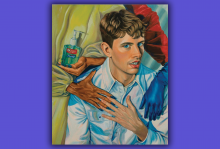
A FEW WEEKS ago, a friend invited me to New York with them to see some art. After taking the commuter train down from New Haven, Conn., we made our way through Grand Central Station, onto the subway, then up a steep escalator, eventually arriving at the gallery’s entrance.
Visiting Manhattan during a pandemic is a fascinating study in strangeness. The Times Square subway station is so quiet you can hear your own footsteps. Sweaty players duel on a basketball court, and I am shocked by seeing unmasked faces in public. Even the experience of gallery hopping, one that used to be extremely familiar to me, feels askew. A few of the places we visit require a signed liability waiver before entering. Each desk is punctuated by a giant bottle of hand sanitizer. This imposing combination does not stop me from enjoying the work I see, however. There are many juxtapositions of color and line that sparkle in my brain. An image of a fabric store, itself made out of fabric, proves especially delightful. I see some art books that I think I might like to have in my home. I am glad to have gone.

ON HIS DEBUT record, Palisade, released in 2012, Americana wunderkind Parker Millsap ends the title track singing with blues-soaked vocals, “Writing on a blank white page keeps my demons one more day away.” For Millsap, an Oklahoma native who now calls Nashville home, those lyrics weren’t just a young artist trying to sound profound; they spoke truth to his experience with music and faith.
“When I’m playing [music] with other people and for other people, there is something about it that will always feel spiritual to me,” says Millsap. “After all, that spiritual feeling, that’s the context I first received music in.”
Millsap grew up in a Pentecostal church in a small Oklahoma town, and says if people were going to speak in tongues or run around the sanctuary, it was almost always during the music. “I always resonated with using music to reach ecstatic states,” he says. “As soon as I could play enough chords to keep up, they put me down in front at church.”
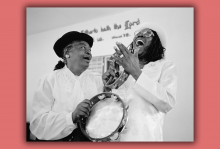
I'VE NEVER REALLY thought about what church ladies do when they’re not at church. My interactions with them have always been tied to the building and its activities. In pre-pandemic times, I would see them at service and maybe hug or shake hands, chat briefly, or just wave goodbye on my way out the door. But easy smiles and they’ve-got-it-together appearances belie the “less presentable” parts of everyone’s story, bits that, if shared, could create a space where we no longer feel isolated, but instead are comforted by the fact that each of us is trying to deal with at least one hot mess in our lives. The Secret Lives of Church Ladies by Deesha Philyaw unflinchingly tells the stories of a few of those messes, stories of the things that we hide.
Each narrative in the collection aches with a desire for connection, and Philyaw provides the reader a sometimes uncomfortably intimate view of how these “church ladies” try to meet this need. Some characters turn to intimate affairs, choosing partners with whom they can envision more or partners with whom there can never be more than fleeting and secret arrangements, sometimes due to the damage of homophobia. Other stories aren’t about romantic desires at all, but feature characters longing to connect with family, carrying a deep-seated, perpetual wish to simply be seen, valued, loved, and embraced for who they are by the people they thought could be expected to do so.
I particularly love that this collection features characters of diverse ages. I’m so tired of how not-entirely-subtle ageism has crept into various avenues of storytelling, as if all significant human experience, growth, and formation is wrapped up by the time you’re 40. Philyaw rejects this notion and delivers fully formed characters of all ages.
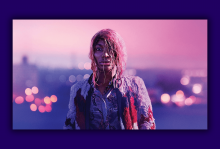
I MAY DESTROY YOU, Michaela Coel’s brilliant 12-episode series released last summer on HBO (and BBC One), chronicles the haphazard recovery of millennial writer Arabella Essiedu after she survives a sexual assault. In Coel’s hands, Arabella (played by Coel herself) is never reduced to a battered woman or a perfect victim. She remains, throughout, entirely human—as do her friends and family. Watching the show reminded me of a line from Bertolt Brecht’s Messingkauf Dialogues in which an actor protests that he cannot play both “butcher and sheep.” Coel seems to disagree. Her Arabella is both warm and wildly narcissistic, armed with a righteousness that often wobbles into unbridled megalomania.
I May Destroy You is a champion of nuance. Although rape is allowed its own category of awfulness, Coel, as writer, draws her audience into other situations that aren’t so clear cut.Each episode is as compassionate as it is damning of human selfishness and myopia. Considering how little mainstream television centers the trauma and healing of Black women (much less with complexity), the critical acclaim Coel has accrued thus far is not surprising. Unfortunately, as is so often the case with art made by people of color, Black women in particular, this acclaim has yet to materialize in awards. I have mixed feelings about awards, especially when the diversity conversation in Hollywood seems in love with its own stagnancy. However, that doesn’t mean awards aren’t nice to have, or that their conferral signifies nothing; awards often reveal the white cultural establishment’s willingness to give something up. After all, if I May Destroy You gets nominated for a [insert trophy here], “Memily in Maris” might not win!

WHEN ELIZABETH MAGIE invented The Landlord’s Game, known today as Monopoly, she drew up two sets of rules: one “monopolist,” employing fierce competition and cutthroat property snatching, as the game is played today; the other “anti-monopolist,” namesake of a larger movement intended to demonstrate the dangers from unregulated wealth accumulation by the few and economic inequity in the late 1890s. Magie hoped that soon “men and women will discover that they are poor because Carnegie and Rockefeller, maybe, have more than they know what to do with.”
For Magie, daughter of an abolitionist and anti-monopolist, game creation was not simply an innocent pastime. She resonated with how games could provide a way to envision a new reality and usher in robust ideas.
When I was in college, several of my classmates in a world Indigenous literature class talked about how games we grew up playing—from Monopoly to Settlers of Catan—embodied settler colonialism and capitalism. In Settlers, the goal is to build as much as you can in unoccupied land and accumulate resources. In Monopoly, you aim to procure ownership of as many properties on the board as you can, raising rent to force other players into bankruptcy while you elude jail. Ticket to Ride-USA encourages players to build railroads across the United States, invoking the forces of manifest destiny without a critical lens. Jamaica is a board game where European pirates surround the island and battle for the most resources. Bang! The Dice Game catalogs life in the “Wild West,” where the French, Mexicans, and “Indians” fight each other; one dice roll can “save” a player from an “Indian attack.”

IT'S UNLIKELY THAT Donald Trump is fretting over his presidential portrait. With further legal troubles and several industries turned against him, the man has bigger fish to fry. But as we’ve learned time and time again through the ravages of the coronavirus and police violence, just because Trump isn’t worried about something doesn’t mean it doesn’t matter. The unconfirmed, though expected, portrait offers a chance for him to shape a legacy that is in dire need of salvaging. Trump’s painting could serve to underscore—or attempt to elide—the unconventional nature of his time in office, potentially adding a glossy filter to a difficult period in American history. Of course, filtering is more than part and parcel of portraiture. It’s the very nature of the job.
Throughout the centuries, portraiture has been the province of the wealthy and, despite its biographical nature, is a genre that conceals nearly as much as it reveals. Louis XIV, another larger-than-life leader, exhibits this multiplicity of meaning all too well in his portraits. Painter Charles Poerson clothes Louis XIV in the garb of Jupiter—complete with lightning bolts in hand—to signify his victory over a series of nobility uprisings known as the Fronde. By shrouding the king’s humanity, Poerson makes Louis into someone divine, armed with greater might than mere mortals. Who needs the imago dei when you can simply be God? A different portrait replaces the gouty king’s legs with the calves of a younger man. In short, the sovereign portrait is synonymous with a kind of psychological trompe l’oeil, created to preserve power and project glory. American presidential portraits differ in their ends, though they are invested in other kinds of self-delusion: equality and equanimity.

IF YOU WOULD be so kind, I’d like for you to do an experiment with me. Think about a famous work of art, a painting so widely considered Important and Valuable its status could never be questioned. Maybe you’re debating between “The Starry Night” or “Mona Lisa.” Maybe you’re considering something else entirely: Monet’s endless assortment of water lilies, for example. Good. Hold the image in your mind and recall, if you can, the work’s textures, its colors and its moods. Do you like the piece? Do you remember when you first encountered it?
Now, having answered those questions, imagine that someone has stolen it. This mysterious person explains that they are holding the painting hostage until works falsely attributed to the artist in question are exposed as fraudulent. They sign their manifesto with the words, “You will come to agree with me.” What would that do for the public imagination?
Blue Balliett explores this question in her 2004 novel, Chasing Vermeer, and though its main characters are sleuthy sixth graders, I find its basic premise has much to offer even to jaded adults (see: me). A Vermeer painting on its way to the Art Institute of Chicago—“A Lady Writing”—disappears mid-journey, and the thief posits a series of challenges to art historians and the broader world. Petra and Calder, two intrepid University of Chicago Laboratory School students, find themselves caught in the painting’s thrall and, through a series of dreams and coincidences, set out to find the “Lady.” But they’re not alone.
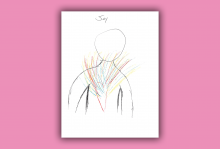
IT'S LONG BEEN known that empathy may be inherent in portraiture—walking a mile in the shoes of one’s painting subject. As the renowned 15th-century painter and monk Fra Angelico put it, “He who wishes to paint Christ’s story must live with Christ.” New research reinforces this association between artmaking and spirituality.
A 2020 Fetzer Institute study of U.S. spirituality, which includes 16 focus groups and 26 in-depth interviews, reports that more than 80 percent of its 3,600 respondents self-identified as somewhat spiritual, and about 60 percent aspired to be more spiritual. Novelly, researchers used drawings as an “inductive research tool” to understand better what respondents meant by “spirituality,” said Veronica Selzler, lead author of the Fetzer study and strategy director at Hattaway Communications in Washington, D.C. Art allowed participants to define spirituality creatively rather than prescriptively. “It was through these drawings that the diversity and common threads began to emerge,” she said.
The study reproduced 38 drawings in which respondents, aged 18 to 71, interpreted spirituality. The “slightly spiritual/not religious at all” Dale, 69, drew five clouds—one perhaps smiling—and grass as his “happy place, but you could call it a spiritual place.” Daniel, 20, who is “very spiritual/not at all religious,” drew a self-portrait praying on his knees before Jesus.
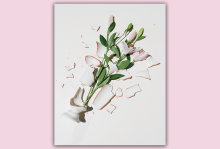
AS THIS PANDEMIC rages on and people are isolated in their homes with their intimate partners, many are more vulnerable than ever to violence. According to the Centers for Disease Control and Prevention, approximately 1 in 4 women and nearly 1 in 10 men experience sexual violence, physical violence, or stalking by an intimate partner during their lifetime. In addition, an average of 24 people per minute are victims of rape, physical violence, or stalking by an intimate partner in the United States—more than 12 million women and men during a single year.
Odyssey Impact, an interfaith nonprofit that addresses social issues through storytelling and media, hopes to change this with a four-part Healing the Healers video series, directed by Kirsten Kelly, that features interfaith peer-to-peer conversations about domestic violence. It is scheduled for a January 2021 release on healingthehealers.org.
This is the second series under the Healing the Healers name. The first was a five-part video series that grew out of a pastor’s efforts in Newtown, Conn., to deal with the aftereffects of the Sandy Hook school massacre; it includes conversations with clergy, social workers, and first responders who have been on the front lines as different communities have dealt with traumatic events. The second Healing the Healers series on domestic violence likewise addresses a crisis by modeling honest conversation about a difficult topic across faith lines.
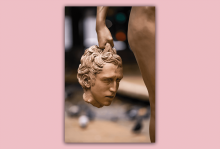
IN THE GREEK mythology I was taught as a child, a recurring plot always struck me as deeply unfair. A god seduces—or rapes—a mortal woman, who either succumbs to the coercion or tries to resist. If she resists, she is punished. If she gives in, a jealous goddess punishes her.
The fact that my classmates and I had to read these myths without being encouraged to deconstruct them still disturbs me. My desire is not to sanitize art nor neuter its political incorrectness, but rather to see people (especially children) realize their agency as readers, particularly in instances where misogyny should be questioned. Which is why the installation of Luciano Garbati’s sculpture Medusa With the Head of Perseus in New York City represents a delightful inversion.
As the story goes, Medusa was a beautiful young woman, unfairly punished for being a victim of Poseidon’s lust. Because the rape takes place in Athena’s temple, Athena, believing her sanctuary defiled, turns Medusa into a monster. Medusa, now with snakes for hair, is so hideous that she can transform anyone who beholds her to stone. Perseus, a demigod himself, is tasked with killing Medusa, a duty he executes via beheading. A 16th-century bronze by Benvenuto Cellini, titled Perseus With the Head of Medusa, depicts Perseus in his moment of triumph. He holds Medusa’s head aloft while snakes emerge from her neck.
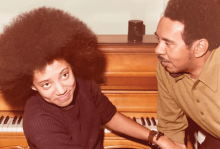
FOR BLACK people in the U.S.—a collective from which lives are still stolen on a daily basis, as though the slave-boat travels of 1619 never ended but merely set course in new directions to the same destination—reclamation is essential. Perhaps our history motivated the poet Nikky Finney’s father to repurpose a phrase that long had a negative connotation into a moniker to give his daughter positive focus.
“My mother steeped us in the stories of Black history and my father named me ‘Love Child’ in order not to give anyone else the opportunity to distract me from what I had come to earth to be,” writes Finney, winner of the 2011 National Book Award for Poetry, in her newest collection, Love Child’s Hotbed of Occasional Poetry. “So be she.”
And so she is. About a month into quarantine 2020, Finney released perhaps the most history-and-affection-freighted book to be published this harrowing year. Love Child’s Hotbed cannot be read on a Kindle. Less a typical, slender publication of modern verse, and more a hefty coffee-table book of startling import, it brings to mind The Black Book, that historical anthology co-edited in 1974 by Toni Morrison, the eventual Nobel laureate in literature who was an editor at the publishing company Random House. A book that strove to contain the vast lives of Black people in the U.S.—their horrific experiences and their magnanimous achievements—The Black Book was a gift to the nation’s children and grandchildren of slaves (and even inspired one of the greatest novels of all time, Morrison’s Beloved). Likewise, in a time of immense death and thus plundering of families, Finney’s latest book is a blessing for a continuously undone but never destroyed people, reaching into the past to grasp hope and self-worth to sustain their future.
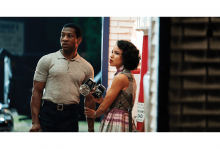
EVERYTHING THAT THE devil stole, HBO’s giving back to me. That’s a sacrilegious statement, but sometimes that’s how I feel when I’m on my couch watching yet another show with a largely Black cast (and sometimes even crew) miraculously greenlit in a sea of Hollywood whiteness by the network titan that years ago gave us The Wire and made many of us notice the likes of Idris Elba.
For what seemed like eons to Black folks eager for visual confirmation that their lives mattered, Black characters on TV were mostly relegated to sidekick or background roles—and Black writers, directors, and showrunners were rare or entirely absent. But from Insecure to A Black Lady Sketch Show, Watchmen to I May Destroy You, HBO is perhaps the strongest ally for revolutionary Black artists and creators of color on and behind TV.

IT'S ALMOST DECEMBER, and in a few weeks we may gather with our families (potentially via Zoom) to sing “Away in a Manger” and “Hark! The Herald Angels Sing.”
Each of these songs depicts baby Jesus in a different way, from a poor, defenseless child to a newborn king. Each contributes to our faith in a different way. That tiny baby reminds us of Jesus’ humanity and his solidarity with the poor, while the incarnated Lord reminds us of God’s splendor and glory.
From these hymns to the latest Hillsong chorus, most songs about Jesus have been written by Christians for their fellow believers. Over the past 50 years, however, this has changed. Songs about Jesus no longer show up just in church, but also in discos, honky-tonks, blues bars, and strip clubs. Over the past 50 years, Jesus has appeared in hundreds of songs in every secular genre. These artists explore in their own unique ways the question that Jesus asked his disciples: “And who do you say that I am?”
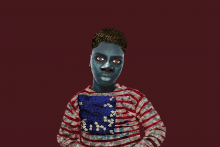
IF YOU EXPECT a column about art, you may have turned to the wrong page. Though I would very much like to be writing about aesthetics, I’m afraid I cannot do so outright. The problem is simple: Our world is on fire, has been for a very long time, and we can no longer afford to avoid the why. Our country looks in the mirror and cannot recognize its face because its self-concept is built on lies. To be an American, it seems, is to be in a state of constant dissociation. Perhaps that is the fine print in our social contract—mandated distance from our inner worlds and the violence we inflict on each other.
But, if we are constantly looking away from ourselves, what are we looking at instead? The answer is, again, simple. We—this “we” primarily composed of white people—have traded a clear vision of reality away for the tawdry allure of images. Put frankly, we worship a portrait of America that has not yet come into being.
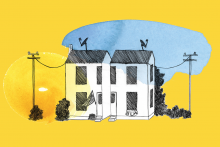
RETIREES RICHARD AND LISA Starling are Georgia natives turned Cornell academics; their son Michael and his wife, Diane, are barely getting by in Texas; their son Thad and his boyfriend, Jake, live comfortably in Brooklyn. These family members voted for different candidates. Their experiences of religion range from solace to trauma, they have an unwritten list of topics they don’t discuss, and it takes tragedy and close confines to break open their surface-level peace and push them into the conversations they’ve been avoiding.
These characters appear in David James Poissant’s latest novel Lake Life, which is set in 2018 but explores family dynamics that feel especially relevant in 2020. Jen Hinst-White spoke with Poissant in late July, five months into COVID-19 social distancing, two months after George Floyd’s death and the resulting groundswell of protest, and three months before the national election.
Jen Hinst-White: You could have written a straightforward family drama, but your characters’ personal struggles also pull in big questions of theology, culture, and politics. Why?
David James Poissant: Those things grew important to me in my writing life because they’re important to me in my real life. I’m bad at acquaintanceships. As soon as I meet someone, I want to talk to them about God and their childhood and “Do you go to therapy?” I can’t write about family without writing about place, and I can’t help considering the politics and environment of the places I’m writing. Do these people believe in God, and in what way? And how do their beliefs affect their worldview? In an alternate universe, I’m probably a sociologist.

IN THE FIRST season of Brooklyn Nine-Nine, the show’s main protagonist, Jake Peralta (Andy Samberg), arrests a jewel thief named Dustin Whitman (Kid Cudi) without sufficient evidence, and the entire precinct spends the next 48 hours trying to fix his mistake. By showing the police detectives desperately trying to find evidence, Brooklyn Nine-Nine portrays the arrest as a puzzle to be solved instead of an abuse of power.
With likable characters and sharp writing that hits more than it misses, Brooklyn Nine-Nine has cemented itself as both a critic and crowd favorite, earning Emmy nominations and massive support from its networks, NBC and Fox. Its cast is one of the more diverse on television, and so are its characters. The police captain is a gay, Black, married man. Two of the other detectives are Latinx; one of them is a bisexual woman.
But at the end of the day, the show sanitizes police brutality and misconduct with humor. Police incompetence in Brooklyn Nine-Nine is portrayed as funny and showing a need for the character to develop; it doesn’t threaten someone’s safety like it does every day in real life.

WHEN WESTERN THEATER was born in the ancient Theatre of Dionysus some 2,500 years ago, its creators aspired to create a democratic institution, meant to serve the members of every tribe in Greece. The reality fell far short of the aspiration, of course, since women and slaves were excluded from both democracy and the grand stone auditorium. Nevertheless, the theater of Greece was born in a kind of perfect storm, a concurrence of democratic ideology and ideals—especially the belief in free speech for those deemed fit to govern (i.e., free men)—with a golden age of literature. This era brought about some of the most powerful dramatic works known to humanity in the plays of Aeschylus, Sophocles, Euripides, and Aristophanes.
We could be at the brink of another golden age for theater, arising from changes caused by the coronavirus pandemic. How can I say this, when most of those who work in the theater are worried about how theatrical institutions will survive this crisis? Joseph Haj, artistic director of the Guthrie Theater in Minneapolis, notes that theater has endured for centuries “because it is one of society’s proven necessities, not some old-fashioned practice.” It’s a necessity because humans need to gather to hear our stories and find safety in being together—the communal theater experience pushes back at the dangers and sadness that surround us.
And yet the questions abound: Will there be enough funding, public and private, to keep theaters afloat? Will audiences come if they are living in fear? Funding and sufficient audience support were worries before the pandemic hit, even as theatrical writing and technique thrived during the past decade, releasing many new voices onto public stages. The problem is that when a theater ticket often costs upward of $100, few people can afford access to these new voices. Despite the democratic ideals at its roots, U.S. live theater has served a very small, mostly white, upper-middle-class audience. The main exceptions are the rare state and federal grants that provide broader access through educational programs.

FIONA APPLE’S 2020 internet takeover began the moment she released her newest album, Fetch the Bolt Cutters, in April. This cyber movement was not orchestrated by Apple, who does not have any social media accounts, but rather by the countless women tweeting, Instagramming, and exulting over the album. I probably have the algorithm to thank for the prevalence of these posts in my feed, as they were mostly from my demographic—millennial women with overflowing collections of books and high-waisted pants. Yet, algorithm or no, the joy I witnessed was completely organic, and if you’ve heard the album, you’ll understand why.
Many people’s introduction to Fiona Apple is not her strong, eclectic body of work. Instead, it’s her infamous speech at the 1997 MTV Video Music Awards in which she exhorts viewers, especially adolescents, not to model their lives after “what we think is cool.” After that, Apple seemed to vanish from the public eye, emerging every so often with an absurdly long album title that tied bundles of complicated songs together.
I’m beating around the bush with the word “complicated.” What I really mean is “angry.” Fiona Apple is one of the few women in music who is allowed to be furious in an unpretty way. She has become a secular patron saint for prophetic women whose insight makes them vulnerable to the ridicule of others.

Force of Nature
The podcast Floodlines tells the stories of four New Orleanians who stayed in the city as Hurricane Katrina hit, 15 years ago this August. Through eight episodes based on a year of reporting, the extensive traumas caused by the storm and a botched federal response are examined. The Atlantic.

WE OFTEN THINK the word “apocalypse” refers to an “end of days” scenario. While that is one usage, it’s incomplete. The Greek root, apokálypsis, is defined as revelation, or an unveiling. It’s often used in prophetic terms, as in the biblical book of Revelation. An apocalypse doesn’t mean destruction so much as laying bare humanity’s underlying truths.
This year, George Miller’s Mad Max: Fury Road, one of the best post-apocalyptic films in a series that helped define the genre, turns 5. Miller’s Mad Max movies are fascinating not just because of their creativity and economical storytelling, but also for how they address the revelatory nature of apocalypse, both in humanity’s sinful nature and its capacity for selflessness.
The Mad Max films happen in a violent wasteland that Miller shows as the direct result of humanity’s greed and recklessness. Fury Road advances that revelation, altering the series’ attitude from cynicism to hope. Fury Road’s message of renewal, and prophetic undertones, makes it a perfect movie for uncertain times.